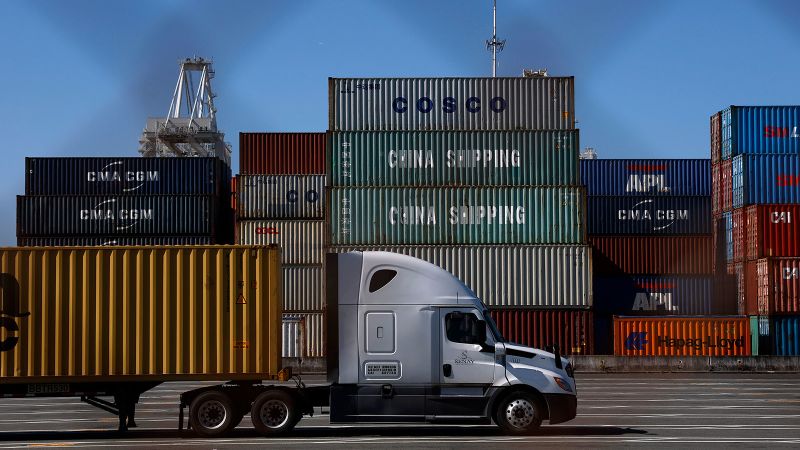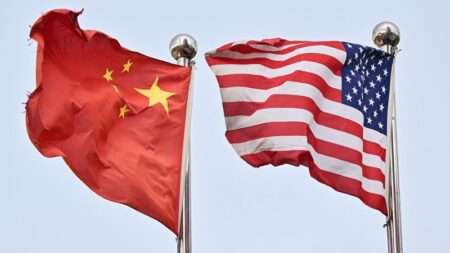The recent developments around U.S. ports highlight the ongoing turbulence in international trade amidst fluctuating tariff regulations. Many officials in port cities have recently observed a dreaded repeat of pandemic-level declines in imports. The necessity of good news regarding tariffs was particularly pressing, as port authorities were bracing for the consequences of dwindling supplies. When initial court rulings indicated a potential easing of tariffs, there was a brief flicker of hope among retailers and port operators alike. However, that optimism was quickly dashed when a federal appeals court swiftly put a pause on the ruling.
The rapid shifts in tariff regulations serve as a reminder of the complexities involved in international trade. Even when news surfaces about a potential reduction in tariffs, it doesn’t immediately translate to increased imports at U.S. ports. This delay can lead to reduced product availability in the coming months, resulting in limited options for consumers and potentially higher prices. Industry insiders emphasize that retailers are caught in a bind, hoping for a substantial influx of goods that may take longer than expected to materialize.
Jonathan Gold, the Vice President of Supply Chain and Customs Policy at the National Retail Federation, reflected on the high expectations that were prevalent during the initial court ruling. “I think folks are still being cautious on how this is going to proceed,” he noted, indicating that stakeholders remain wary of drastically ramping up their import activities amidst ongoing legal and regulatory uncertainties. Even after recent measures that saw tariffs on goods from China drop from 145% to 30%, major harbors such as the Port of Los Angeles have not experienced a corresponding spike in import activity.
Statistics reinforce this predicament: during the last week of May, the Port of Los Angeles recorded a staggering 30% drop in imports when compared to the previous year. Similarly, the Northwest Seaport Alliance, which is comprised of the Ports of Seattle and Tacoma, also documented a 30% decrease from late April to early May. This dismal performance is a continuing trend that poses questions about inventory levels and consumer choice down the line.
Things got more complicated on Wednesday evening when a Manhattan court issued a ruling against a significant swath of tariffs implemented under former President Donald Trump, including a 10% tariff imposed on numerous imports and higher duties targeting China, Mexico, and Canada. The ruling was met with an immediate appeal from the White House, resulting in a federal appeals court reinstating these tariffs until both parties submit their written arguments next month.
For retailers, the lack of clarity is a considerable challenge, especially since they often have to plan their product orders weeks or months in advance. The barrage of conflicting information leads to confusion and hesitance amongst retailers, prompting what Gold described as a “ping pong back and forth” in their strategy. Consequently, the current landscape has seen a decrease in container shipments destined for U.S. ports.
A significant part of this reduction stems from the expense associated with the 30% tariff on Chinese imports—which accounts for approximately 45% of the cargo entering the Port of Los Angeles. Gene Seroka, the port’s executive director, indicated that while some businesses may be able to absorb the costs of importing already-manufactured goods, many retailers are forgoing new orders altogether.
Seroka commented that the uncertainty surrounding trade policy elicits a “wait and see” attitude among businesses. Although the situation appears to be gradually improving for the Port of Los Angeles—with an expected increase in cargo containers arriving in early June—the statistics are still alarming. For instance, 96,000 large cargo containers are anticipated to arrive in the first week of June, a notable rise from 69,000 containers in the final week of May; nevertheless, the volume remains 9.4% lower than the same time last year.
Looking ahead, the clock is ticking. A 90-day moratorium on reciprocal tariffs is set to conclude on July 9, while the pause in tariffs with China will end on August 12. Businesses are pressed for time, as orders typically require significant lead times for manufacturing and shipping.
Experts have differing opinions on the potential outcomes of this tumultuous trading environment. Daniel Hackett from Hackett Associates suggests that while empty shelves may not be imminent, the heightened costs of doing business are likely to be passed on to consumers. Major retailers like Walmart, Home Depot, and Target have already stated they intend to hike prices as a strategy to absorb the effects of tariffs.
In conclusion, the current state of U.S. ports and trade policies underscores the unpredictable nature of international commerce. Retailers are navigating a tricky landscape, where success hinges on clarity, consistency, and the ability to adjust strategies based on shifting legislation. The ongoing uncertainty inevitably raises operational costs, thereby exerting additional pressure on prices felt by everyday consumers.










